Unlike most downtown galleries, James Oliver Gallery gives an impression of home. Comfortable lounge chairs cluster in the middle of the viewing space, allowing ample standing and seating space. Like a private viewing parlor, the gallery allows an intimate, informal space for discussion. In stark contrast, the art of Pivotal abandons this sense of comfort and familiarity. Featuring the photography of three Philadelphia-based artists, Pivotal brings a disquieting and strange atmosphere to seemingly familiar subjects.
Where are they going?
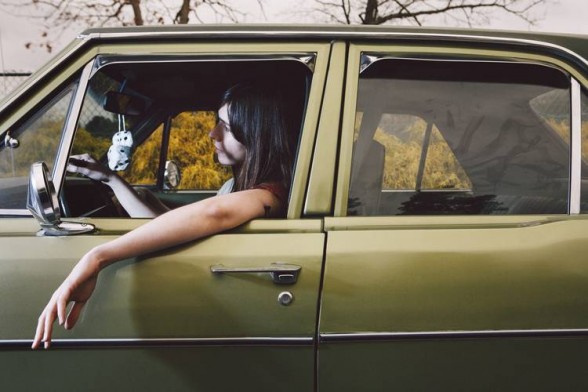
The photographs of Pivotal–mainly featuring exterior views of homes, businesses, and classic cars–remind the viewer of places seen in passing. Unoccupied motels, roadside bars, and old-fashioned diners flash by as the viewer paces the length of the gallery. Like the view from a car window, the images are reminiscent of quick, transient moments captured on a cross-country road trip or a daily commute.
The work of artist Nadine Rovner, featured above, exhibits one such journey. Part of a series called Roadtrip, her images present themselves as vignettes from a couple’s excursion, with pit stops at motels, diners, and flowering fields. Unlike the other photographers in the show, Rovner captures both people and places in her series–using both natural and manmade environments as backdrops in a narrative about two travelers.
The stillness of Roadtrip, which imbues the pictures with an effect of banality and insignificance, is undermined by the artist’s subtle manipulation of light and motion. In “Ride,” pictured above, the overcast daylight plainly illuminates the subjects, as an unseen, artificial glow from the front of the car floods the driver’s face and arm with unnatural, cold light. Another photo in the series places the viewer in a voyeuristic position, viewing the traveler from the window of a diner as they remove a suitcase from the trunk of the car. This disquieting feeling of spying, as well as the strange lighting, made me question everything I had first thought about the series–about the relationship of its subjects, where they were going, and why.
Light without comfort
The work of the two other featured artists mimics the impression of this kind of journey, but features exterior views without human subjects. The photographs of Martin Buday and Mark Havens, capturing brightly painted motels, houses, and signs, boldly stand out from the whiteness of the gallery, and call to mind the photography of Todd Hido. Hido’s work exhibits the loneliness of homes at night, frozen by the cold ambiance of streetlights. Similarly, artificial lights play a key role in the images of Buday and Havens. Despite the energy and excitement these lights bring to their photographs, the desolate natures of the subjects do not let the viewer find comfort in them.
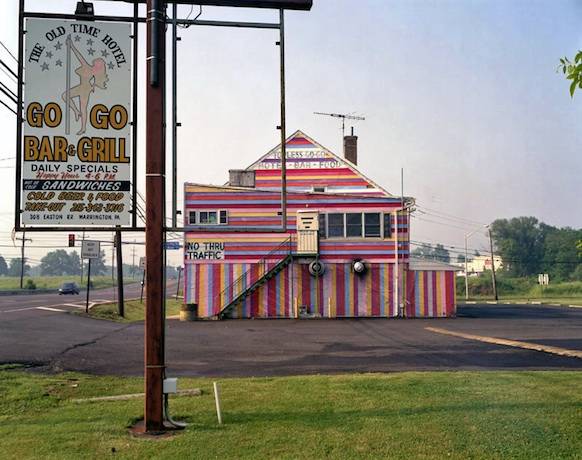
Like memories from a cross-country road trip, Martin Buday’s photographs exhibit various pieces of the United States. In examining “go go bar and grill,” I was reminded of colorful roadside dive bars, familiar only in memories of passing them. Perhaps this is Buday’s vision of American life–moments of experience without context, making us strangers in our own country.
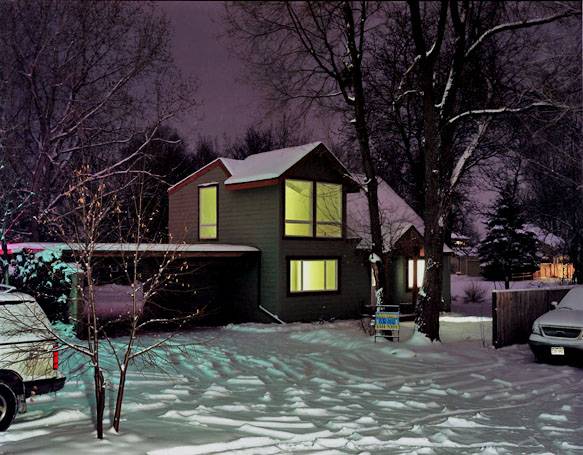
Ghost coast
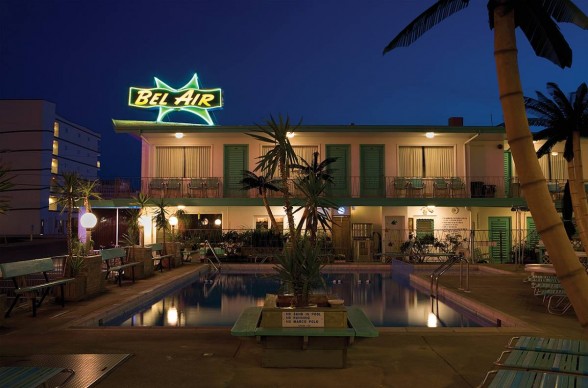
Featuring the iconic motels of Wildwood, New Jersey, artist Mark Havens relies strongly on the artificial light of their neon signage. In his photo series Out of Season, Havens photographed the beach city on its nine-month off-season. With no tourists, the motels are nearly abandoned.
It is one thing to photograph an empty building, but it is another to capture its atmosphere of abandonment and isolation. Havens does just this—among the dated architecture and plastic palm trees, in the glow of artificial lights, the alienation of Wildwood’s off-season creeps into the atmosphere of each photograph. These motels clearly wait for life to return, but do not welcome the viewer.
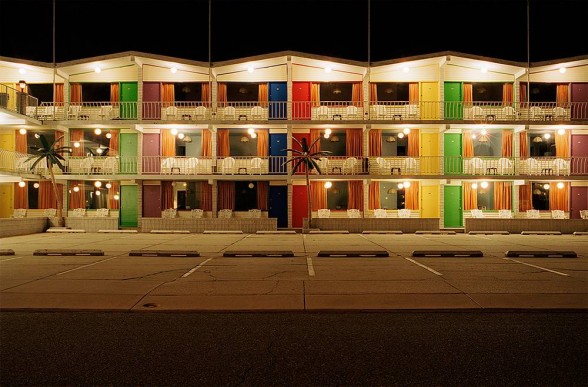
A sense of estrangement and exclusion unites the art of Pivotal in discomfort, forsaking the sickening nostalgia many artists once applied to American landscapes. Rovner, Buday, and Havens reject the notion, once framed by photographers Ansel Adams and Edward Weston, of American scenery as naturally awe-inspiring vistas. Re-envisioned through a lens of isolation and estrangement, Pivotal transforms the American outdoors into an anxious landscape of concrete, plastic, and electricity.
Pivotal is on view now until August 8, 2015 at James Oliver Gallery. A closing reception will take place on August 8 from 6-9 pm. Regular visiting hours are Wednesdays through Fridays, 5-8 pm or Saturdays 1-8 pm.









